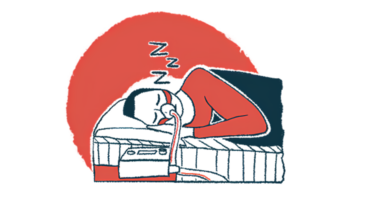Both Surgery, Cast Correction Effective in Treating Early-onset Scoliosis in PWS Children, Study Reports

Both growth friendly surgery (GFS) and serial cast correction (SCC) were found to help resolve early-onset scoliosis, and to improve spine structure, in children with Prader-Willi syndrome (PWS), according to a two-year study.
The findings from the study, “Growth Friendly Surgery and Serial Cast Correction in the Treatment of Early-onset Scoliosis for Patients With Prader-Willi Syndrome,” were published in the Journal of Pediatric Orthopaedics.
Scoliosis is a medical term used to define a sideways spine curvature of at least 10 degrees, which can affect virtually any person. However, people with some health disorders — and, notably, those with Prader-Willi syndrome — are more susceptible to such spine problems, and may experience them at an earlier age.
Spinal abnormalities in PWS are more frequent and severe with age as patients grow. Such abnormalities may be associated with chronic pain, impaired daily functioning, and ribcage deformities that may compress the heart and lungs. GFS and SCC are available treatment options that can minimize spine deformity and prevent spinal curve progression in people with PWS.
To learn more about the impact of these methods, a team of researchers from the U.S. and Canada assessed the clinical progress of 23 children with PWS, who were followed for two year. A total of 15 of the children, including eight girls, were treated with GFS, while 10 — eight boys and two girls — underwent SCC.
In addition to scoliosis, the team also determined each patient’s kyphosis — exaggerated, forward rounding of the back — spine height, and right/left thoracic heights and widths. Assessments were done before and after treatment, as well as at the end of the follow-up period. The type and severity of complications also were recorded.
Among those who underwent GFS, the mean age at surgery was 5.8 years. Eight of the children had spine-based surgery with placement of traditional growing rods. Rib-based surgery was performed on three children, in which the VEPTR device by DePuy Synthes was placed to help correct rib deformities. Two children had growth-guided procedures with Medtronic Spine’s Shilla system to help secure and straighten the spine while it grows.
The data showed a significant decrease in scoliosis after surgery from 76 to 42 degrees, and an overall 45% correction compared with the curvature before the treatment. Kyphosis decreased from 59 to 41 degrees with surgery, but increased to 53 during follow-up, which represented no difference from pre-surgery values.
Spine height increased after surgery and throughout follow-up by a mean of 31.5 cm (approximately 12.4 inches). Boys showed greater spine height growth than girls (11 cm vs. 5.6 cm). The data further showed that both right and left thoracic heights — but not widths — were greater at the last assessment, each at 12 cm (about 4.7 inches).
For SCC, the treatment was performed at a mean age of 1.8 years. It consisted of serial casts that were placed surrounding the upper body, to force the spine to acquire the correct position while the child was growing.
After starting SSC, and during follow-up, changes in the children’s scoliosis showed a trend toward decrease. Measurements were 45 degrees before surgery and 37 degrees at the last assessment. Kyphosis also decreased from 56 to 42 degrees, though this change was not statistically significant.
Spine height increased from 22.4 to 26.4 cm after SCC — a difference of 1.6 inches. Left thoracic height increased from 8.5 to 10 cm — a 0.57 inch difference — and right thoracic width changed from 6.6 to 8.0 cm, for a difference of 0.55 inches. No sex differences were found in SCC outcome.
Analysis of surgery-related complications showed that patients with a body mass index (BMI) higher than 17 kg/m2 had a tendency to experience more device-related than disease-related complications compared with those with lower BMI.
Complications were experienced by 11 children (85%) who underwent GFS. Of the 28 complications seen with this procedure, most (23) were device-related, and included rod fracture, deep infections, and paralysis of the lower limbs. Nonspecific pain and respiratory distress were among the five disease-related complications.
Children younger than 5 years before surgery were more likely to experience two or more complications, the study found.
“This keeps with the popular treatment paradigm of delaying GFS until children are older to minimize complications,” the researchers said.
Among serially casted patients, only three (30%) experienced complications. Five were disease-related and four device-related. Most (five) were mild in severity, including anemia, skin irritation, and two cases of tight cast.
Overall, “SCC and GFS were both effective in treating [early-onset scoliosis] in PWS patients,” the researchers concluded.






